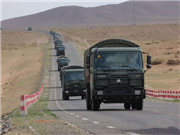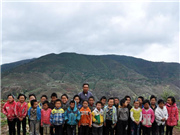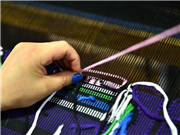

VII. Rights of Persons with Disabilities
In 2014 the government adopted a series of measures to protect and improve the well-being of persons with disabilities, and progress was made in social security, employment, education, and provision of public services for disabled people.
The lives of disabled persons with financial difficulties better secured. The Ministry of Civil Affairs and China Disabled Persons' Federation supported the introduction of living expense subsidies to disabled persons with financial difficulties and of nursing subsidies to those suffering from a high degree of disability in some regions. Nineteen provinces, autonomous regions and municipalities directly under the central government adopted the policy of granting living expense subsidies to disabled persons with financial difficulties, and 15 had adopted the policy of granting nursing subsidies to those suffering from a high degree of disability. Nationwide, 77.42 percent of the entitled population had access to either of the two policies, benefiting more than seven million people with disabilities.
Notable achievements in key rehabilitation projects. In 2014 the central special lottery public welfare fund provided 1.063 billion yuan for the rehabilitation of the disabled. Thanks to a number of key rehabilitation projects, 7.515 million disabled people received rehabilitation services of various kinds: 748,000 received cataract surgery, including 300,000 free operations; 142,000 visually impaired people received visual aids; 123,000 blind people received orientation and mobility training; 32,000 children with hearing impairments received hearing restoration or language training; 30,900 children with intellectual disabilities received training in rehabilitation institutions; 73,400 children and 34,800 adults with intellectual disabilities received rehabilitation guidance in their communities or homes; 40,000 children with brain paralysis received training in rehabilitation institutions, and their parents also received relevant training; 367,000 physically challenged people received rehabilitation training in their communities or homes; 8,860 physically handicapped children from poor families and 224 persons suffering from leprosy received surgery; 5.837 million patients with mental disorder received comprehensive rehabilitation services, 462,000 indigent people with mental disorder received medical services, and 20,000 children with autistic disorders received rehabilitation training; 1.524 million assistance devices were provided to people with disabilities, of which 403,200 were provided gratis by the central special lottery public welfare fund for disabled people living in poverty; and 29,000 artificial limbs and 64,000 remedial aids were provided cheaply or free for disabled people living in poverty.
In addition, efforts were made to train rehabilitation personnel, including 25,800 rehabilitation management staff, 55,900 rehabilitation specialists and 169,800 community rehabilitation coordinators. In total, 914 municipal districts and 2,023 counties and county-level cities provided community rehabilitation services, benefiting 6.1445 million people.
Construction of barrier-free facilities accelerated. In 2014 the construction of a barrier-free environment progressed in accordance with the law. All provinces, autonomous regions and municipalities directly under the central government made steady headway in building barrier-free cities and counties, involving 650 cities and 1,600 counties nationwide. The focus was on building barrier-free curb ramps, ramps for wheelchairs and pavements in residential quarters, and barrier-free entry-exit, passages, floors, stairways, elevator landings and compartments, and other areas in public buildings. The "database of barrier-free renovation of deprived families with disabled members" was put into operation to promptly record the progress of barrier-free renovation work.
Public cultural services to persons with disabilities improved. In 2014 nearly 50,000 urban and rural centers of public cultural services provided barrier-free access, with rehabilitation facilities and cultural amusement devices available where conditions permitted. Public libraries nationwide had 800,000 copies of books in braille, and provided 180,000 reading seats for blind people. Libraries and cultural and art centers at all levels organized performances, cultural training programs and resources distribution around the "National Day for Assisting Disabled Persons," "International Day of Persons with Disabilities" and "Ear Care Day." Blind people who sat the national college entrance examinations in 2014 took the exams in braille, or with the assistance of audio device. Special staff were provided to assist them in taking the exams.
 |  |
Day|Week

 Stunning pictures of Chinese Navy
Stunning pictures of Chinese Navy UFO spotted hovering over a temple in E China
UFO spotted hovering over a temple in E China Getting close to PLA's first professional 'Blue Army'
Getting close to PLA's first professional 'Blue Army' Picturesque Xinduqiao town in SW China
Picturesque Xinduqiao town in SW China Tsinghua junior makes over 10,000 yuan a day by selling alumnae's used quilts
Tsinghua junior makes over 10,000 yuan a day by selling alumnae's used quilts Graduation photos of students from Zhongnan University
Graduation photos of students from Zhongnan University A school with only one teacher in deep mountains
A school with only one teacher in deep mountains Glimpse of cultural heritage "Xilankapu"
Glimpse of cultural heritage "Xilankapu"